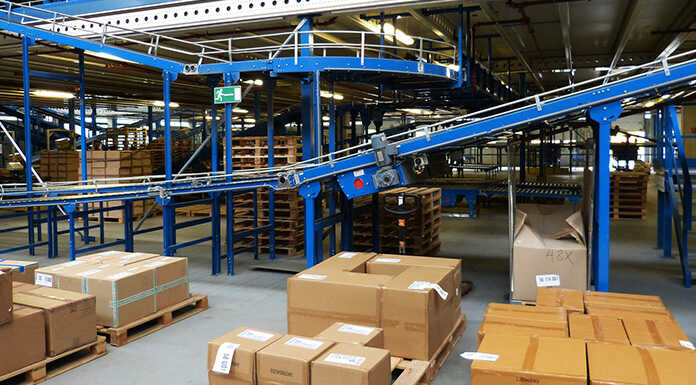Part three of the four-part Machine Safeguarding Series. View series
This blog will cover machine guarding and hazards associated with conveyors and mechanical power presses. These two machines are used in a wide range of industries for many different functions.
Conveyers
Conveyors are used in many different capacities to transport materials or equipment. They can be configured to move material horizontally, vertically, at an angle and around curves. Conveyors present unique hazards including nip points, pinch/crush points, rotating parts, counterweights, material dropping, entanglement and servicing without proper lockout. Some of the most serious injuries on conveyors are from no/inadequate safeguarding and failure to lockout during servicing or maintenance.
Hazards associated with conveyors vary so it’s imperative to evaluate each specific machine to determine what controls should be used. Guarding conveyor belts properly will prevent clothing, jewelry and long hair from becoming entangled. Guards should protect the user from in-running nip points and projections and rotating parts. In addition to physical guards, workplaces can be protected by keeping the hazardous parts a safe distance away from the worker, installing signage warning employees of the hazards, conducting routine inspections, and having properly functioning emergency stops along the line.
Mechanical power presses
Mechanical power presses (aka punch presses, stamping presses) are used to punch, shear, form and assemble parts. They have some distinctive features that separate them from other machines including a flywheel, crankshaft, clutch, brake and ram. One of the greatest dangers involving mechanical power presses is at the point of operation where the stock is inserted. A hand or body part in this area can result in crushed or severed limbs.
Safeguarding controls for mechanical power presses include barrier guards and devices such as two-hand trips, pullbacks and restraints. Barrier guards prevent the entry of hands or fingers into the point of operation because people cannot reach through, over, under or around the guard. A presence sensing device (light curtain) is an option when a barrier guard is not. When programmed properly, a light curtain will shut down equipment when an object, such as fingers, break the beam. Because light curtains require some technical expertise to set up and program correctly, I recommend that you consult with your supplier to make sure your maintenance team understands how your devices work and what is required to test and maintain the light curtains. Pull backs can be found on many older machines and are rarely installed on newer machinery but are effective to prevent point of operation contact.
Check out all of the posts in the Machine Safeguarding Series
Part 1: Machine safeguarding basics
Part 2: Performing a risk assessment and determining controls
Part 3: Machine safeguarding for conveyors & mechanical presses
Part 4: Machine safeguarding for rollformers/rollbenders and turning machines

















